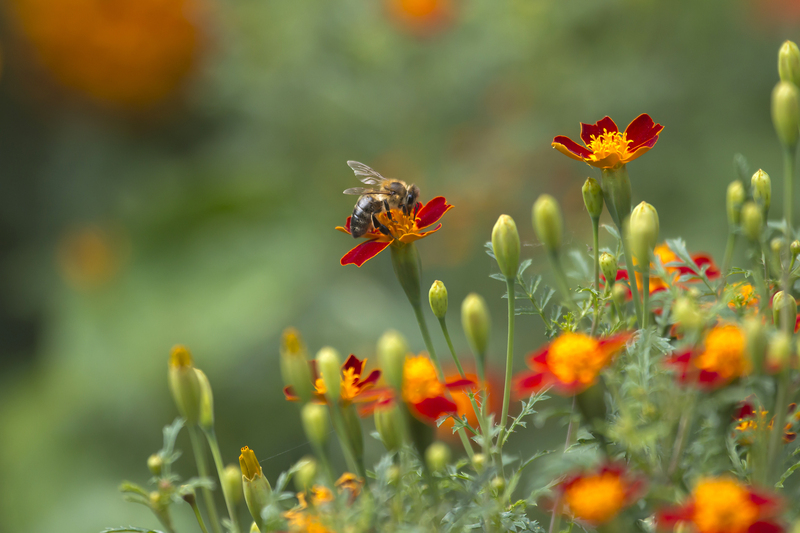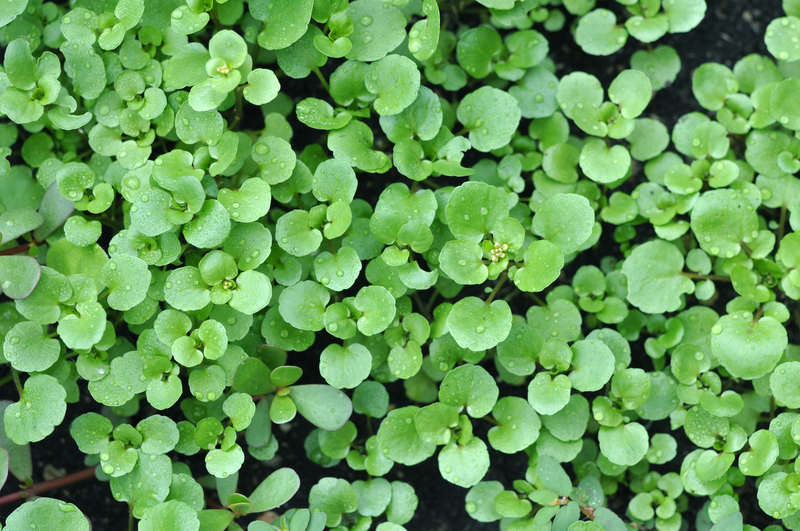Leafy Love and Happy Pups: Gardening Advice for Canine Companions
Posted on 30/08/2025
Leafy Love and Happy Pups: Gardening Advice for Canine Companions
Gardening and dogs are passions that bring immense joy to many households. But can you create a lush, vibrant outdoor space that's also safe and fun for your four-legged friends? With the right strategies and thoughtful planning, your backyard or garden can become a paradise for both plants and pups. In this comprehensive guide, you'll learn everything you need to know about pet-friendly gardening: from safe plants and dog-proof landscaping to canine enrichment and maintenance tips for a lush, happy, and healthy garden.
Why Create a Dog-Friendly Garden?
Dogs thrive when they have a safe and stimulating environment outdoors. A well-designed, dog-friendly garden not only enhances your landscape but also provides:
- Physical exercise - Spaces for your dog to run, jump, and play.
- Mental stimulation - A varied environment with new scents, textures, and exploration areas reduces boredom and unwanted behaviors.
- Safety - Minimizing exposure to toxic plants or dangerous materials helps prevent accidents and vet visits.
- Bonding - Time spent together outdoors strengthens your relationship.
With leafy love in mind, let's explore how to cultivate a backyard that makes both blooms and tails wag!

Choosing Dog-Safe Plants for a Happy Pup Garden
Which Plants Are Safe for Dogs?
Not all pretty plants are safe for curious canine companions. Some popular garden choices are toxic to dogs, causing anything from mild stomach upsets to severe health issues if ingested. When designing your garden for dogs, always prioritize dog-safe plants.
- Dog-Safe Flowers: Sunflowers, marigolds, violets, snapdragons, and zinnias are colorful and non-toxic.
- Non-Toxic Herbs: Basil, sage, thyme, rosemary, and parsley -- you can even harvest some for your own cooking!
- Pet-Friendly Vegetables: Carrots, green beans, cucumbers, and sweet potatoes. Dogs love munching on these, raw or cooked.
- Safe Grasses: Blue fescue, ryegrass, and bermuda are durable and non-toxic for canine lawns.
Avoid These Toxic Plants for Dogs
Avoid planting the following, as they can be highly toxic to pets:
- Lilies (certain varieties), daffodils, tulips, foxglove, hydrangeas, oleander, sago palm, and azaleas.
- Tomato, potato, and rhubarb leaves (the green parts of these plants are toxic).
- Many mushrooms and bulbs - if in doubt, leave it out!
Tip: The ASPCA website has a comprehensive database of plants and their pet safety ratings.
Dog-Proofing Your Garden: Safe, Durable, and Fun
Practical Landscaping Tips for Pet Owners
- Pathways: Create sturdy, paw-friendly walkways of crushed gravel, bark mulch, or flagstone. Avoid cocoa mulch, as it is toxic to dogs.
- Fencing: Ensure all garden boundaries are secure. Opt for strong, dig-proof fencing at least 4-6 feet high to keep pups safe and contained.
- Pet Play Zones: Designate areas where your dog can dig or splash in water. Bury some toys in a sandpit to redirect digging instincts from your prized flowerbeds.
- Lawns: Choose tough, fast-recovering grasses. Clover is also popular in canine gardens for its soft, cool texture and nitrogen-fixing properties.
- Barrier Plants: Use sturdy, non-toxic shrubs or low hedges to shield delicate plants or vegetable patches from trampling paws.
- Shade and Shelter: Dogs can easily overheat. Include trees, pergolas, or dog houses for cool, shady retreats.
Minimize Hazards in Your Pet-Friendly Garden
Keep your dog safe by addressing potential dangers:
- Store gardening chemicals (fertilizers, pesticides, herbicides) well out of reach and choose organic or pet-safe products whenever possible.
- Remove or fence off ponds, compost piles, thorny bushes, and sharp tools.
- Clear fallen fruit and check for wild mushrooms regularly.
Dog Enrichment Activities: Make Your Garden a Puppy Playground
Stimulate your dog's mind and body with creative garden features:
- Agility courses - Set up natural obstacles like stumps, steps, and tunnels for athletic pups to explore.
- Sniff gardens - Plant aromatic, non-toxic herbs like mint and lavender to encourage your dog's powerful nose.
- Water play - Kid-grade splash pools or shallow water bowls help your dog stay cool on hot days.
- Toy zones - Rotate dog-safe toys outdoors to keep playtime exciting.
- Digging pits - Fill a defined area with soft sand for dogs that love to dig and hide treats.
The Art of Training: Teaching Your Dog Garden Manners
Training your pup where to play, dig, or rest makes gardening smoother and more enjoyable for you both.
Boundaries and Commands
- Introduce commands like "leave it," "stay," or "off" to prevent digging, chewing, or trampling plants.
- Reward your pup for using designated playzones or paths with praise, treats, or extra playtime.
- Practice recall and reinforce positive interactions with garden features.
Supervision and Redirection
If your dog loves to "help" by digging up bulbs or nibbling seedlings, gently redirect them to a dog-approved play area. Gradually, your dog will learn which spots are for them and which are for leafy love!
Maintaining a Healthy Garden with Happy Pups
Pet-Safe Garden Care
- Water early in the morning or late evening to prevent hot pavement or soil from burning paws.
- Promptly clean up dog waste to prevent damage to grass and reduce the spread of parasites.
- Use organic mulch or ground covers. Avoid cocoa mulch, and watch for any signs of mold or fungus growth.
- Regularly check fences, gates, and plant health to keep the space secure and tidy.
Repairing Lawn Damage from Dogs
All dogs will eventually leave their mark on your lawn! If patches appear from urine or running, try:
- Flushing affected spots with water immediately to dilute urine.
- Reseeding or patching grass with pet-tolerant varieties.
- Encouraging your dog to use a specific "potty area," such as gravel or mulch zone, to minimize widespread damage.
The Benefits of a Garden for Canine Well-being
Your dog-friendly garden isn't just a pretty retreat - it's a well-being booster! The benefits of a thoughtfully planned, pet-safe outdoor space include:
- Physical activity - Regular play reduces obesity and joint issues.
- Mental enrichment - Scent, texture, and visual diversity reduce stress and boredom-induced behaviors.
- Socialization - A secured garden offers a safe space for positive dog-dog and dog-human interactions.
- Stronger human-animal bond - Gardening together creates precious memories for you and your canine companion.
Cultivating Leafy Love: Real-Life Examples and Inspiration
Case Study: The Digging Dalmatian
Susan from Oregon shared that her Dalmatian, Max, loved to excavate her rose beds. By installing a dedicated sandpit tucked behind perennial grasses and reinforcing the "dig here!" command, Max now enjoys hours of happy digging - no roses uprooted!
Puppy Paths for a Senior Hound
Mark designed a wheelchair-accessible pea gravel pathway looping through raised veggie beds for his elderly beagle, Bella. Bella enjoys safe, scenic walks and can easily access her favorite sunny napping spot by the thyme patch.
Seasonal Gardening with Canine Companions
Spring & Summer
- Plant annuals and re-seed lawns.
- Clean up winter debris. Watch for toxic spring bulbs like tulips and lilies.
- Provide plenty of fresh water and shaded nooks.
Autumn & Winter
- Rake up fallen leaves and fruit promptly.
- Prepare raised beds and containers for cold weather to avoid muddy "dig pits."
- Insulate dog shelters and check fences for winter wind damage.

FAQs: Gardening and Dogs
What's the best ground cover for dogs?
Dog-tolerant grasses like rye or Bermuda, clover, and mulch (avoid cocoa mulch) are best. Artificial turf is also an option for low maintenance.
Can dogs help with gardening?
Absolutely! Some dogs adore "fetching" sticks, "harvesting" carrots, or simply keeping you company as you work outside. Just supervise and use safe tools.
How can I stop my dog from digging up flowers?
Redirect energy to a designated digging spot. Use deterrent sprays (citrus-scented water), plant chicken wire just below the soil, or place sturdy rocks around problem areas.
Conclusion: Harmony Between Plants and Pups
With Leafy Love and Happy Pups as your gardening motto, you can nurture a thriving, beautiful garden that's as joyful for playful paws as it is for pollinators and people. Remember to choose dog-safe plants, establish boundaries and enrichment zones, and approach garden care from both a horticultural and a canine perspective.
Your garden awaits--so grab your trowel and a tennis ball. The outdoors has never looked (or smelled) so good for humans and hounds alike!

